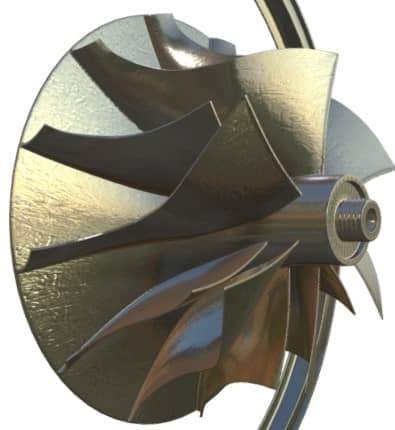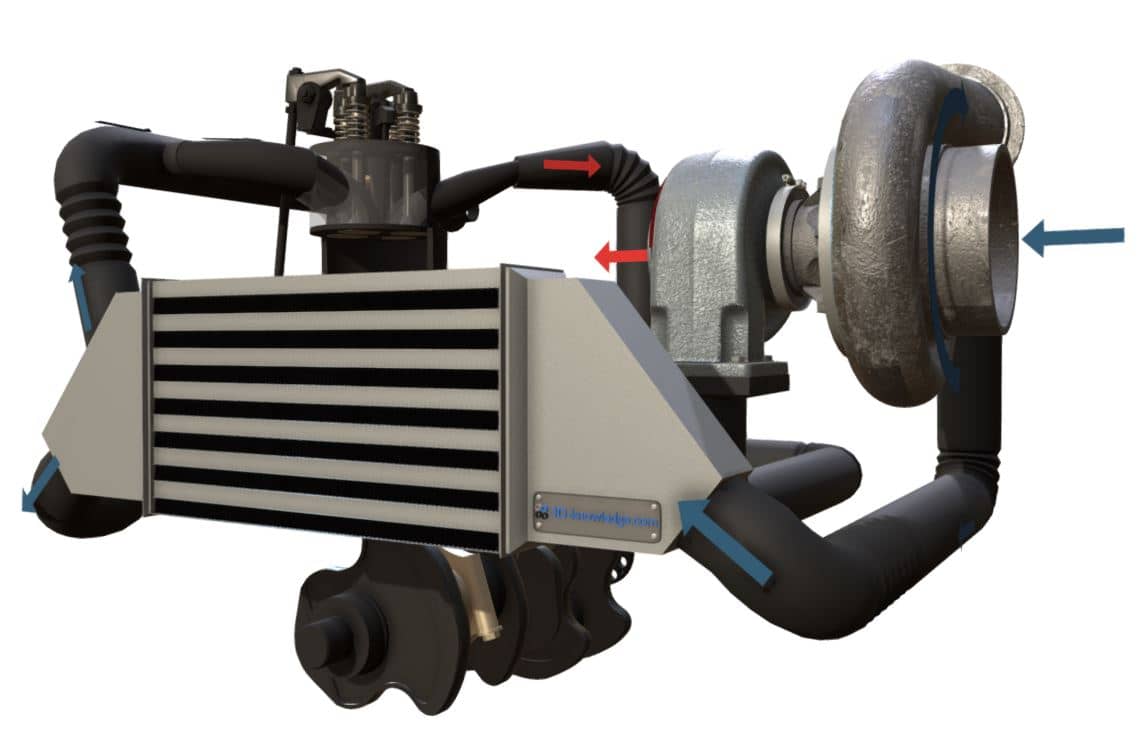What is a turbocharger?
A turbocharger compresses air into the combustion space in order to generate more power. Compressed air has a larger air mass than ambient air and this increases the amount of fuel that can be burnt efficiently within the combustion space (more air = more oxygen for combustion). Increasing the amount of fuel that is burnt efficiently has a corresponding effect upon the engine’s power output (power output increases) and thus a higher power to weight ratio can be obtained for an engine equipped with a turbocharger compared to one without.
Approximately 30-35% of all the heat energy lost by an engine is lost through the exhaust gas system, but a turbocharger reduces this loss to approximately 20%.
What are the main parts of a turbocharger?
The turbocharger consists of three main parts, the compressor, turbine and central hub rotating assembly (CHRA). The compressor and turbine are connected on a common shaft, so both operate at the same speed (same rpm).

Turbocharger Exhaust Gas Turbine
How does a turbocharger work?
The below video is an extract from our Diesel Engine Fundamentals (Part 1) Online Video Course.
Exhaust gases from the combustion chamber are delivered to the turbocharger turbine which causes it to rotate. Because the turbine rotates, so too does the compressor wheel (common shaft).
The compressor compresses air and discharges it to an inter-cooler. Compressing the air increases its temperature which reduces its air density. An inter-cooler is used to cool the air, which increases its air density again. The cooled compressed air is then delivered to the combustion space.
Feedback Loop
The process described above is a feedback loop because the amount of air fed to the engine is determined by the speed of the turbine, which is determined by the amount of exhaust gas discharged from the combustion space. As a larger air mass is discharged into the combustion chamber, more fuel can be burnt efficiently.
Advantages
- Increased power output for engines of a similar size.
- Higher thermal efficiency (because exhaust gas is utilized for useful work).
- Cost effective. The engine power output is increased, but the manufacturing and material costs stay roughly the same.
3D Components
This 3D model shows all major components associated with a typical turbocharger, these include:
- Compressor Wheel
- Turbine Wheel
- Main Shaft
- Casing
- Bearings
- Retaining Clips
Related Online Engineering Courses
Internal Combustion Engine Basics
Diesel Engine Fundamentals (Part 1)
Diesel Engine Fundamentals (Part 2)
Additional Resources
https://www.explainthatstuff.com/how-turbochargers-work.html

